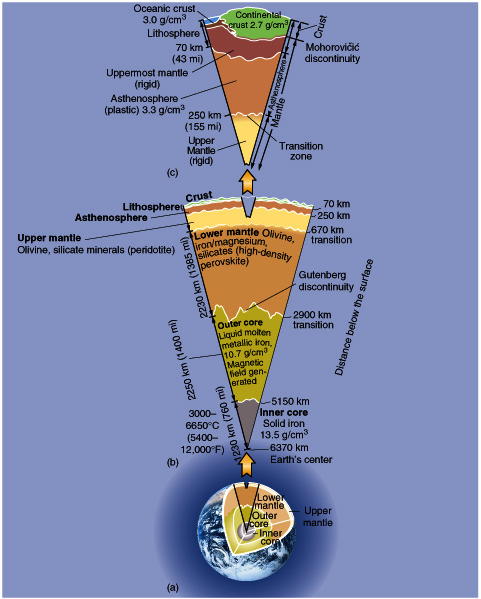Mineral basics
Definition:
The definition of a mineral has several parts:
- It must be naturally occurring. Crystals produced
in laboratory (synthetic) are not, strictly speaking,
minerals.
- It must be inorganic, meaning that it is not the
product of a biological process.
- It must be a crystalline solid. A mineral is a
single, solid substance (phase) which cannot physically be
separated into simpler compounds. Rocks are usually aggregates of
minerals that can be physically separated from one another.
- It must have a definite chemical composition that
can be represented by a chemical formula (e.g.,
SiO2). But this composition is not necessarily fixed, olivine, for example, may vary in composition from
Mg2SiO4 to Fe2SiO4.
However, the chemical variation occurs between strict limits and
any given composition has a specific formula (e.g.,
Mg1.8 Fe2SiO4).
From this definition, you can see that mineralogy relates
chemistry and physics to geologic materials through these tree
sub-disciplines:

Why study minerals?
As we said previously, rocks are aggregates of minerals.
Therefore, studying minerals is essential in understanding how
the earth and other planets formed and evolved.

Also, some minerals have economical value (e.g. gold, cupper,
nickel, diamond etc.). Understanding how those minerals form
will help exploration geologists find them.
|


